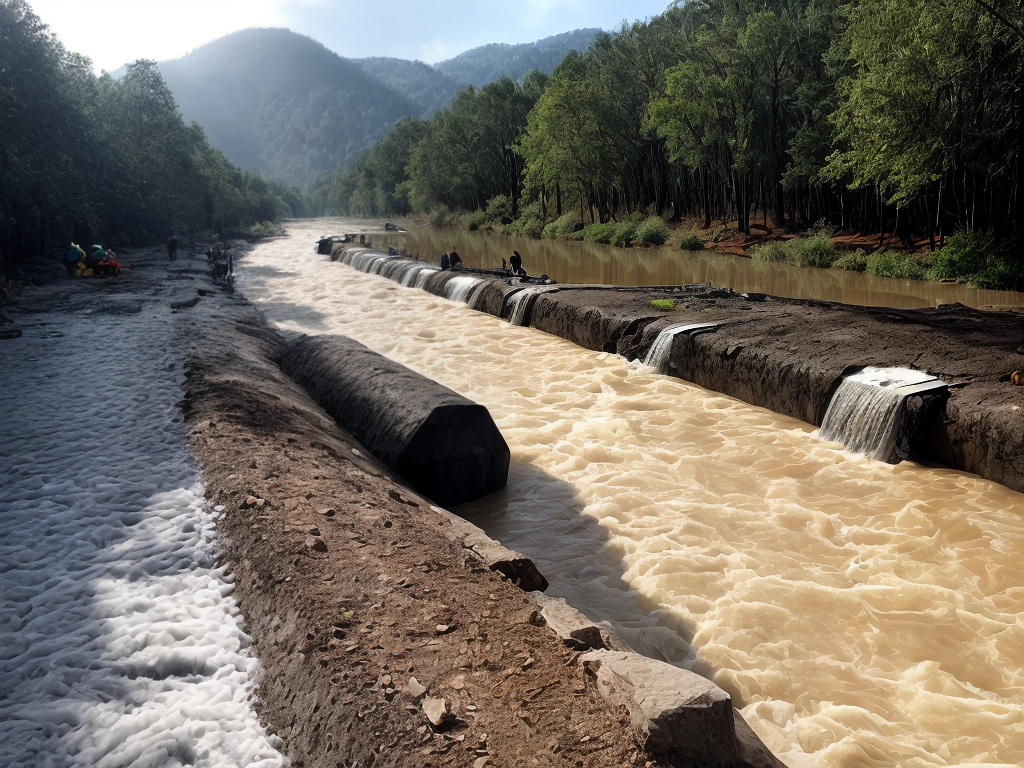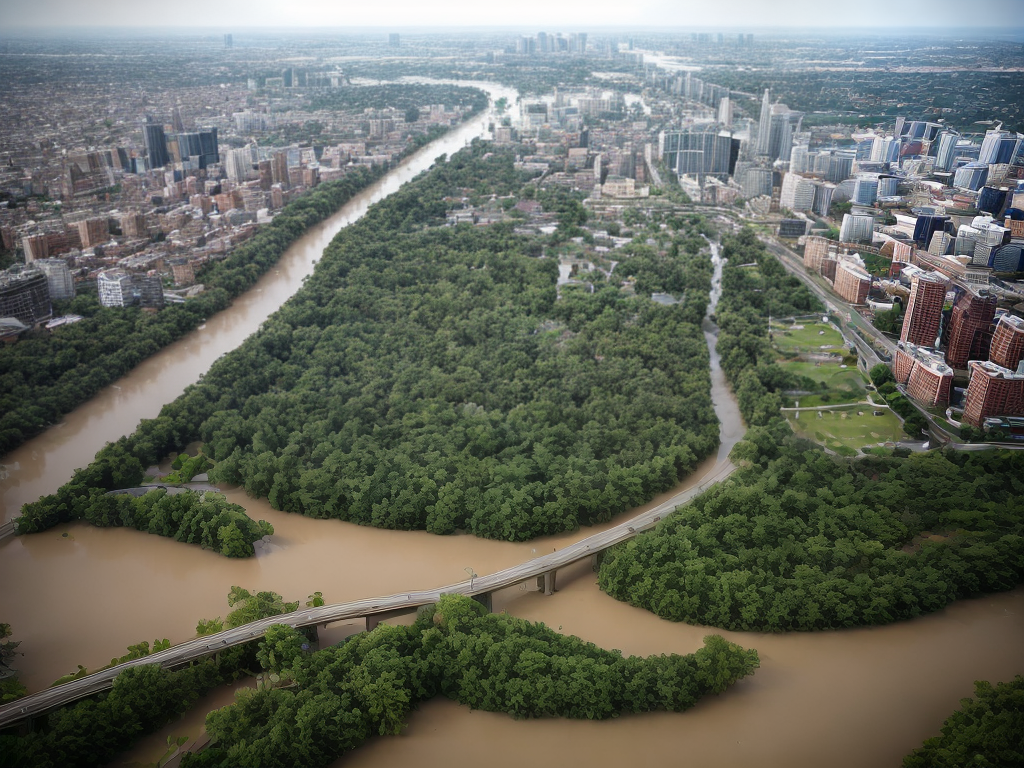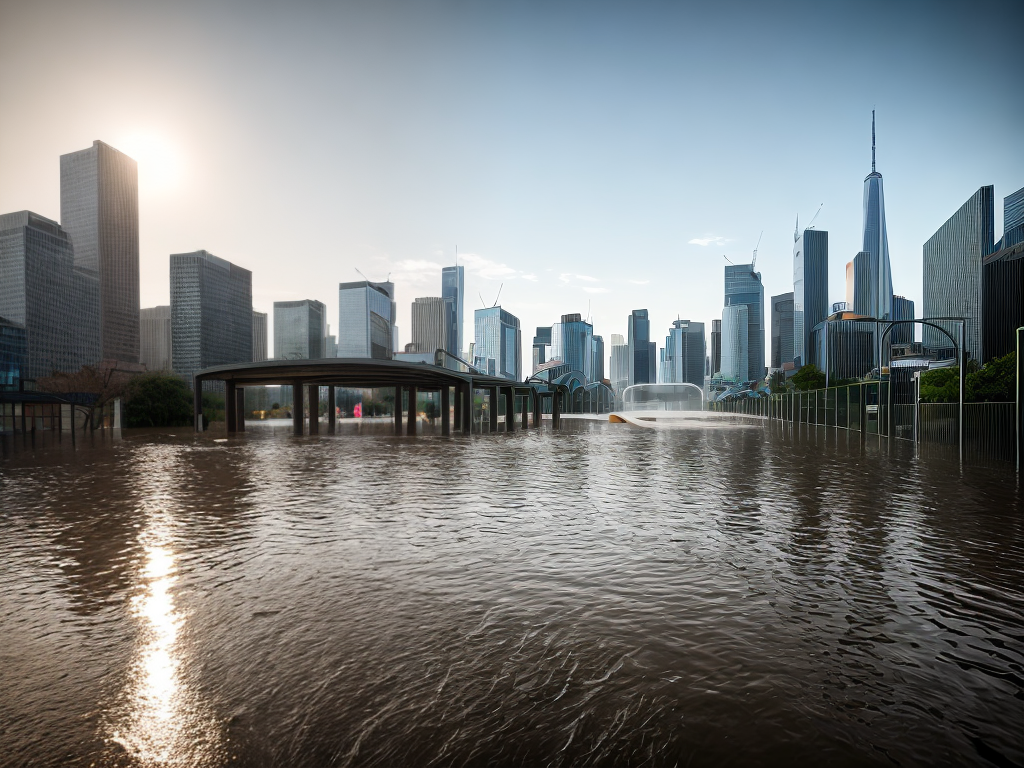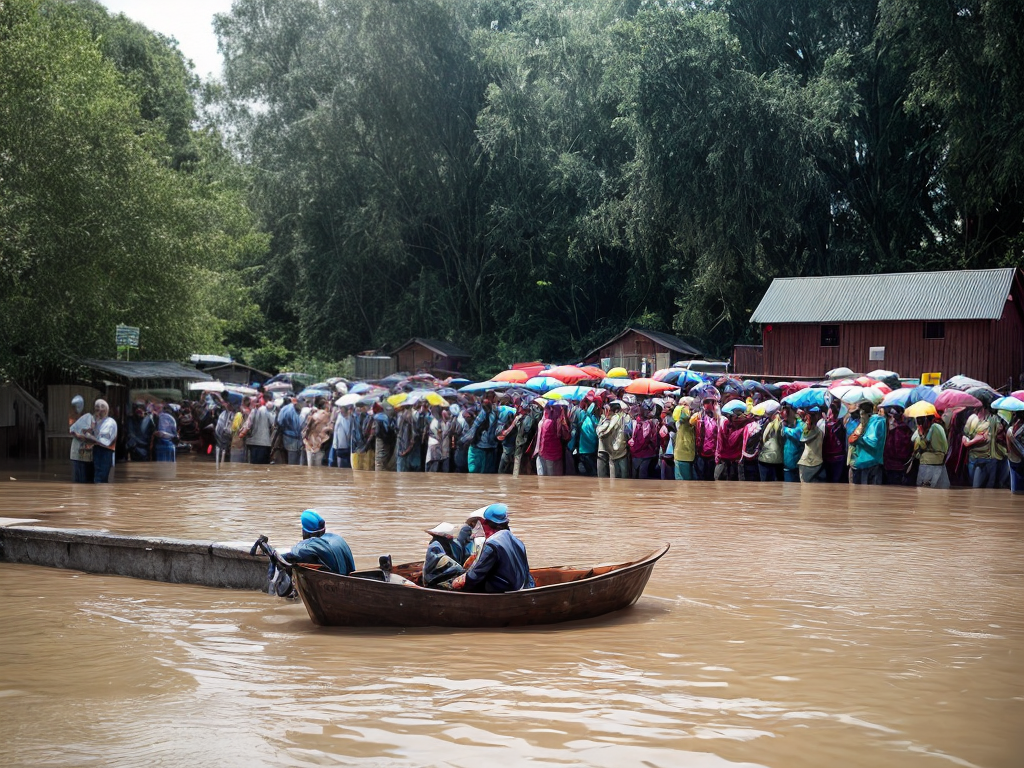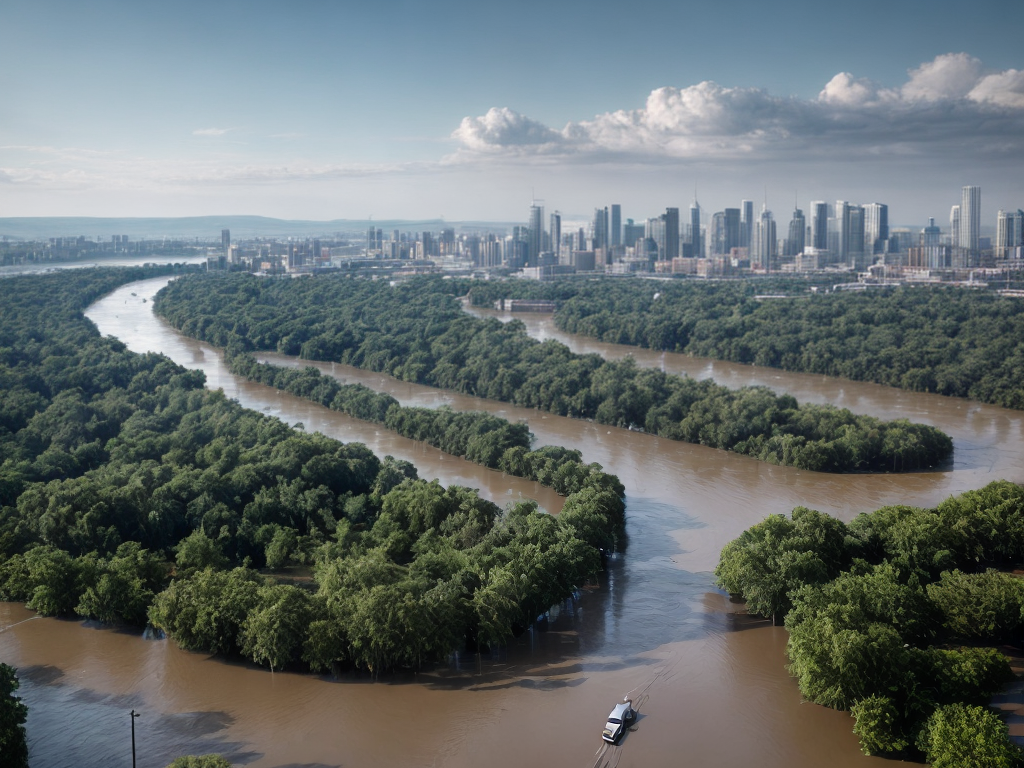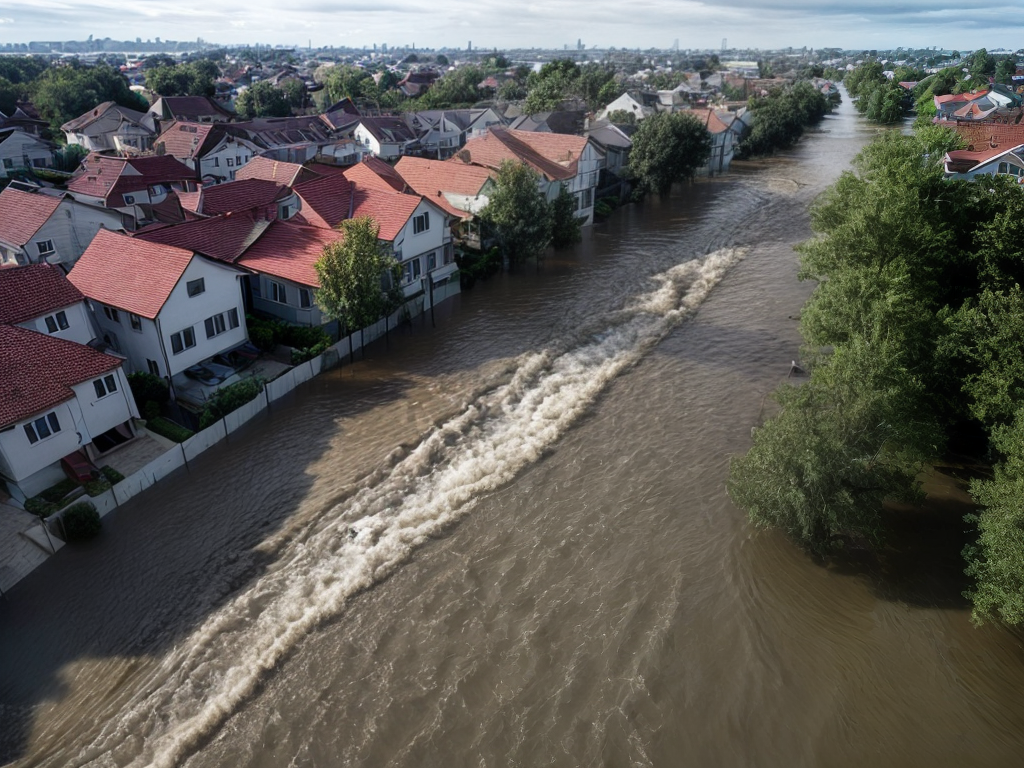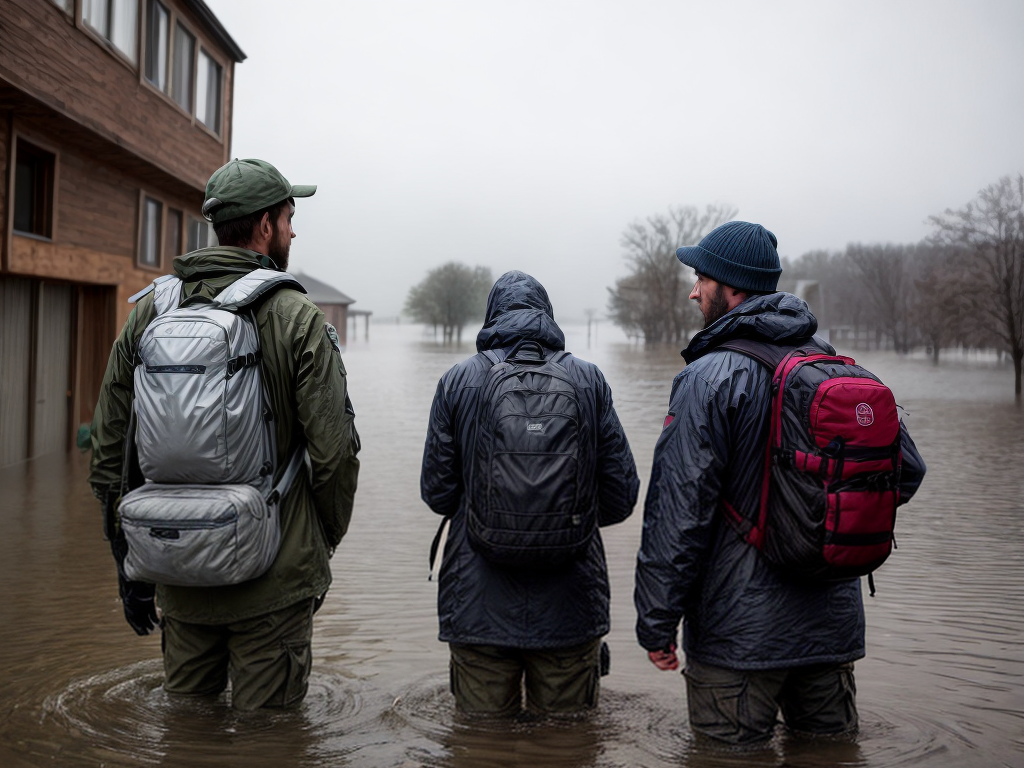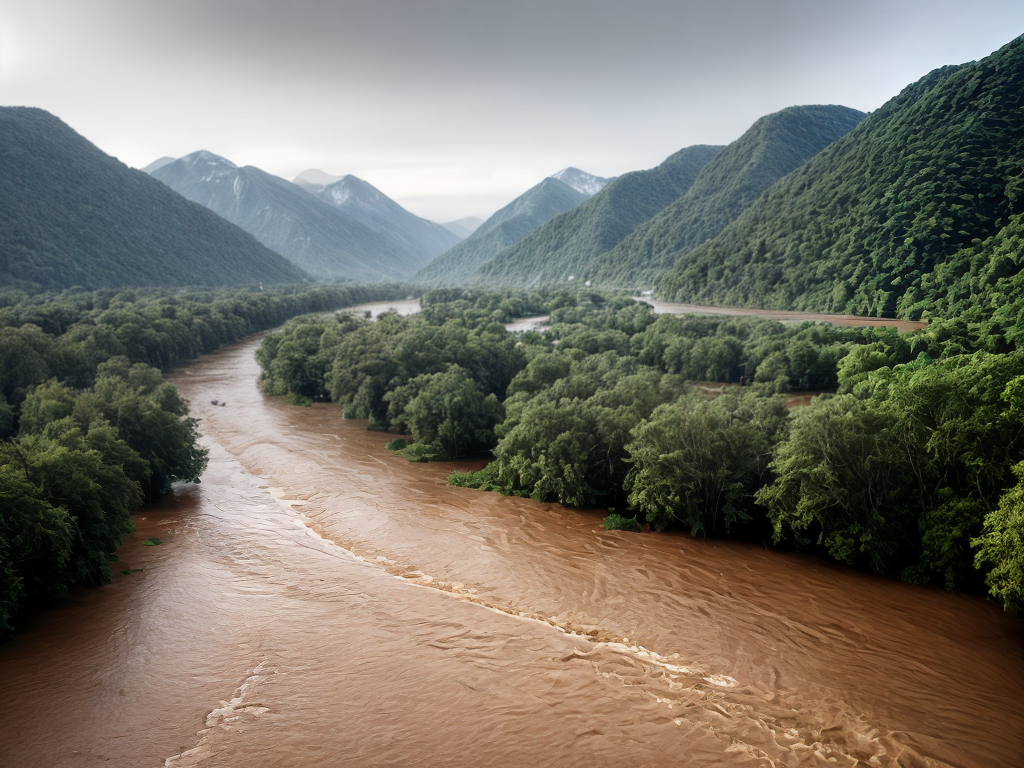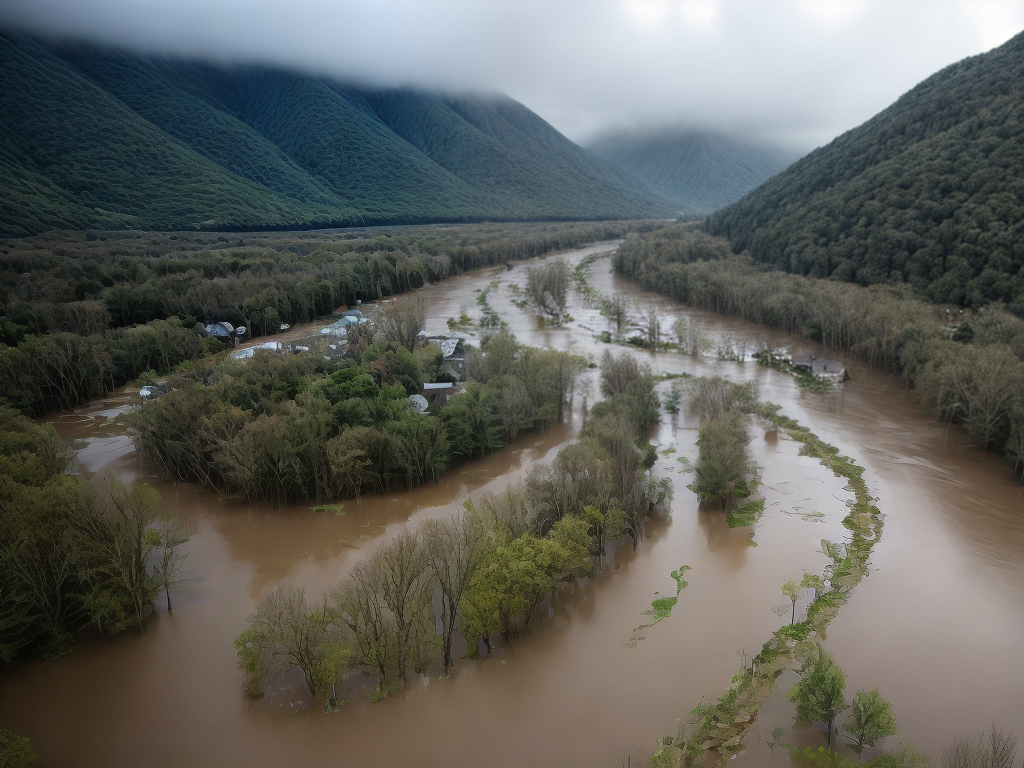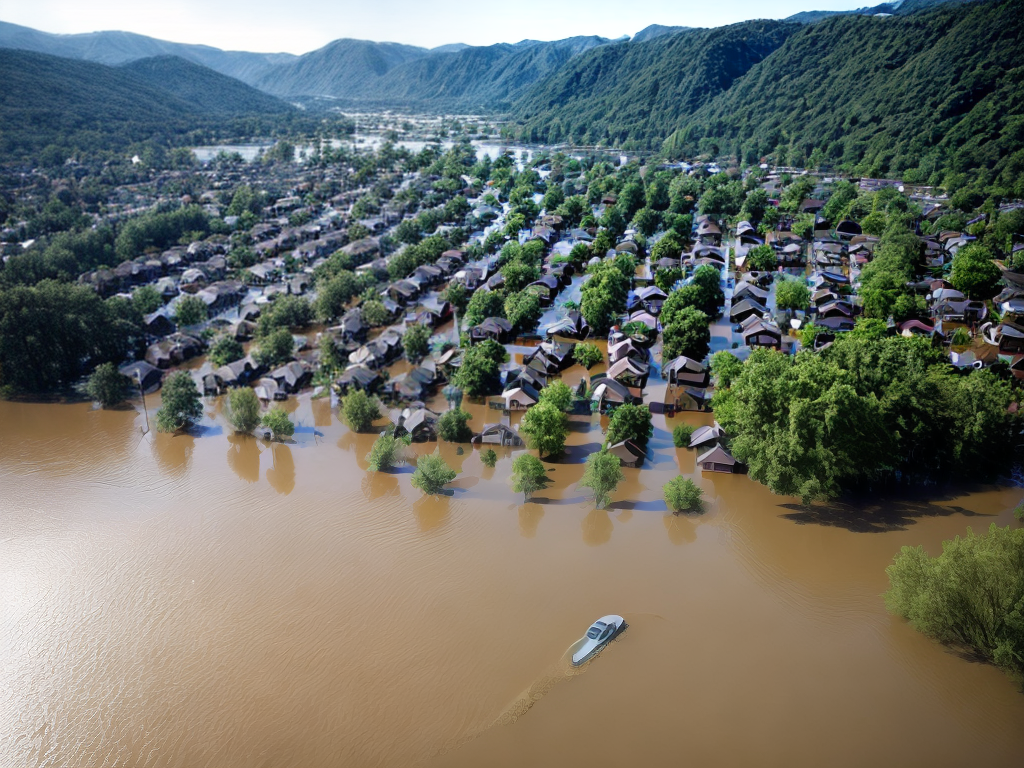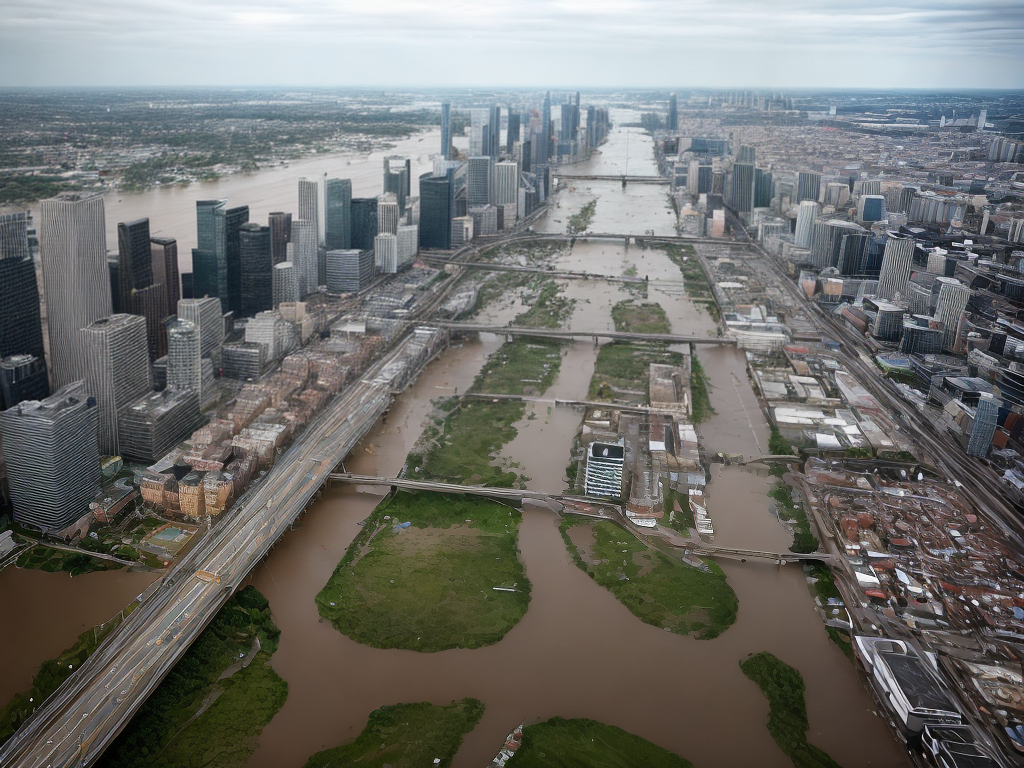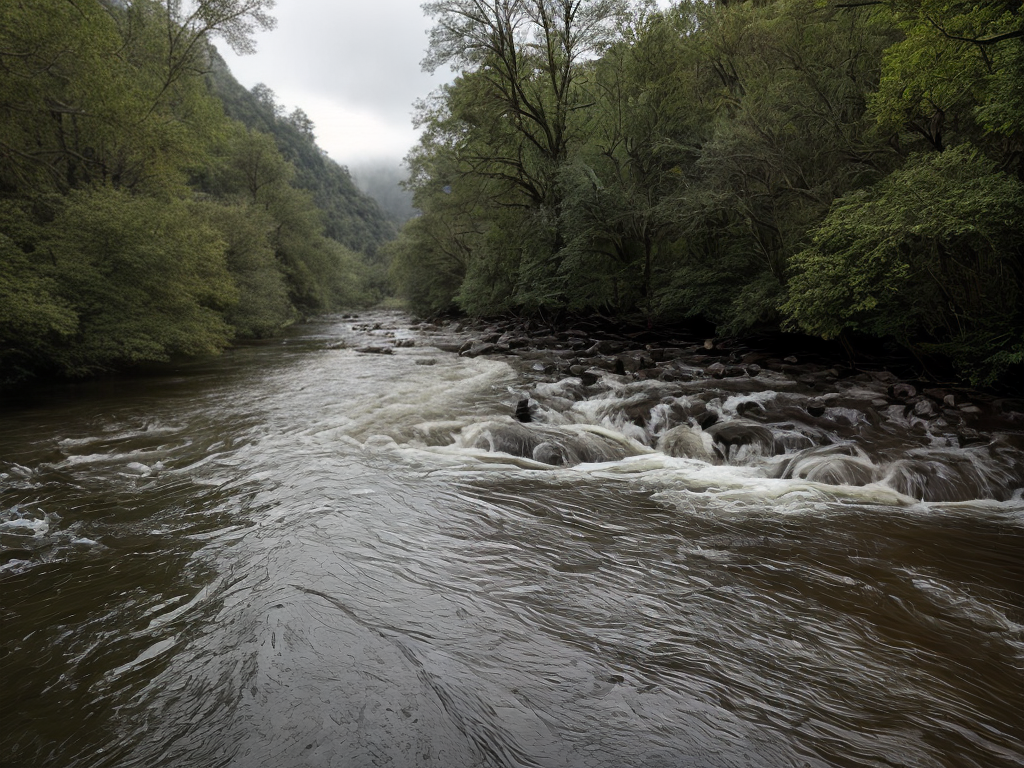
In recent years, the frequency and severity of flooding events have been on the rise, causing significant damage and disruption to communities around the world. With millions of people affected and billions of dollars in economic losses, it has become imperative to enhance our flood prediction and control capabilities. Fortunately, the latest research in this field has yielded promising results, offering innovative solutions to tackle this pressing issue. From advanced flood forecasting models and improved data collection methods to cutting-edge remote sensing technologies and machine learning algorithms, scientists and engineers are continuously working to revolutionize our ability to predict and mitigate floods. But that’s not all; there are also infrastructure upgrades, floodplain zoning, and multi-level governance frameworks that are contributing to a comprehensive approach for flood control. So, let’s explore the latest advancements in flood prediction and control and discover how they are shaping our future resilience to these devastating natural disasters.
Key Takeaways
- Advanced flood forecasting models and data collection methods, including real-time monitoring and remote sensing applications, are improving the accuracy of flood predictions.
- Enhanced sensor technology and remote sensing applications play a crucial role in accurately collecting data on water levels, flow rates, and precipitation, aiding in flood prediction and control.
- Data fusion techniques that combine data from multiple sources, such as remote sensors, satellites, and ground-based measurements, are leading to more precise flood predictions and a better understanding of the factors contributing to flooding.
- Integrated flood management approaches, including floodplain zoning, structural and non-structural measures, development of hydrological models, and the use of Geographic Information Systems (GIS), are essential in balancing flood protection and preservation of natural ecosystems.
Flood Forecasting Models
In our research on flood prediction and control, we have found that implementing advanced flood forecasting models is crucial for effective mitigation strategies. In today’s world, where climate change and extreme weather events are becoming more frequent and intense, it is essential to have accurate and timely information to protect lives and property from devastating floods. Flood early warning systems, based on sophisticated flood forecasting models, play a vital role in providing real-time information to communities at risk.
Flood forecasting models utilize various data sources, including rainfall data, river gauges, and topographic information, to assess flood risk and predict the likelihood and severity of flooding events. These models employ advanced algorithms and computational techniques to analyze large amounts of data and generate accurate predictions. By combining historical data, weather forecasts, and hydrological models, flood forecasting models can provide valuable insights into the potential impact of flooding and help authorities make informed decisions about evacuation and emergency response.
One of the key benefits of advanced flood forecasting models is their ability to assess flood risk at different spatial and temporal scales. By analyzing data from multiple sources and incorporating factors such as land use, soil moisture, and river flow dynamics, these models can provide a comprehensive understanding of flood risk in a particular area. This information is invaluable for urban planners, emergency managers, and policymakers in developing effective flood management plans and implementing appropriate mitigation measures.
Improved Data Collection Methods
We can improve flood prediction and control by implementing enhanced sensor technology, utilizing remote sensing applications, and employing data fusion techniques. These methods allow us to collect more accurate and comprehensive data, enabling us to better understand and predict flood events. Enhanced sensor technology enables us to monitor water levels, rainfall intensity, and soil moisture in real-time, providing us with valuable information for flood forecasting. Remote sensing applications, such as satellite imagery and aerial surveys, allow us to gather data on a larger scale and from areas that are otherwise inaccessible. Finally, data fusion techniques allow us to combine data from multiple sources, enhancing our understanding of flood dynamics and improving the accuracy of our predictions.
Enhanced Sensor Technology
By utilizing enhanced sensor technology, our flood prediction and control research team is able to collect more accurate and comprehensive data on water levels, enabling us to make more informed decisions and take proactive measures to mitigate potential flooding risks. This cutting-edge technology involves the use of smart sensors that are capable of real-time monitoring, providing us with up-to-date information on water levels, flow rates, and precipitation. These sensors are strategically placed in flood-prone areas, allowing us to gather data from multiple locations simultaneously. The data collected is then analyzed using advanced algorithms and machine learning techniques to identify patterns and trends, helping us predict and anticipate flood events with greater precision. This innovative approach revolutionizes flood prediction and control, allowing us to respond swiftly and effectively to protect lives and property.
Remote Sensing Applications
Utilizing remote sensing applications, our flood prediction and control research team has further improved data collection methods, allowing for more comprehensive and precise monitoring of water levels and other relevant factors. With recent remote sensing advancements and satellite imagery analysis, we are now able to gather real-time information and assess flood risks with unprecedented accuracy. By utilizing satellite imagery analysis, we can detect subtle changes in water levels and track the movement of floodwaters. This technology enables us to identify potential areas of concern and take proactive measures to mitigate the impact of floods. These remote sensing applications provide us with a wealth of data that helps us understand the dynamics of flooding events, improve our forecasting models, and ultimately save lives and protect communities.
Data Fusion Techniques
Data fusion techniques have revolutionized our data collection methods, allowing us to gather more accurate and comprehensive information for flood prediction and control research. With the advancements in data fusion approaches and integration methods, we are now able to combine data from multiple sources, such as remote sensors, satellites, and ground-based measurements, to create a more complete picture of flood-prone areas. This integration not only improves the accuracy of our predictions but also provides a more detailed understanding of the factors that contribute to flooding. By combining data from various sources, we can identify patterns, detect anomalies, and make more informed decisions regarding flood prevention and mitigation strategies. These innovative data fusion techniques have the potential to revolutionize the field of flood prediction and control, enabling us to better protect communities from the devastating impacts of floods.
Remote Sensing Technologies
We have found that the implementation of remote sensing technologies greatly enhances flood prediction and control research. These cutting-edge technologies, such as satellite imagery and aerial surveys, offer a multitude of remote sensing applications that provide valuable insights into flood patterns, water levels, and terrain characteristics. By incorporating remote sensing technologies into our research, we are able to improve data collection methods and obtain more accurate and comprehensive information.
One of the key benefits of remote sensing technologies is their ability to collect data over large areas, rapidly and consistently. Satellite imagery allows us to monitor vast regions and detect changes in water levels, land cover, and vegetation density. This information is essential for understanding flood dynamics and developing effective control strategies. Furthermore, aerial surveys provide high-resolution images and detailed topographic data, enabling us to accurately map flood-prone areas and identify potential risks.
In addition to data collection, remote sensing technologies also facilitate data integration and analysis. By combining satellite imagery with other sources of data, such as weather forecasts and river gauges, we can create comprehensive flood prediction models. These models enable us to anticipate flood events with greater accuracy and provide timely warnings to communities at risk. Moreover, remote sensing technologies allow for real-time monitoring and continuous data updates, ensuring that our predictions and control measures remain up-to-date and effective.
Machine Learning Algorithms
Let’s talk about the points related to machine learning algorithms in flood prediction and control research. One point to consider is the use of data-driven flood predictions, where machine learning algorithms can analyze large datasets to provide accurate and timely predictions. Another point is algorithmic flood control, where these algorithms can be used to optimize flood control measures and improve their effectiveness. Additionally, artificial intelligence (AI) can be leveraged for flood management, helping to automate decision-making processes and improve response strategies.
Data-Driven Flood Predictions
Using machine learning algorithms, we can make accurate predictions about floods by analyzing large datasets of historical weather patterns and river levels. This data-driven flood forecasting approach has the potential to revolutionize flood prediction and control. Here are three ways in which machine learning algorithms can enhance our understanding and prediction of floods:
- Improved accuracy: By analyzing vast amounts of data, machine learning algorithms can identify complex patterns and correlations that human analysts may miss. This leads to more accurate flood predictions and enables better preparedness measures.
- Real-time monitoring: Machine learning algorithms can continuously analyze incoming data from weather stations, river gauges, and other sources to provide real-time updates on flood conditions. This allows for timely evacuation and emergency response.
- Flood hazard mapping: By analyzing historical flood data and topographical information, machine learning algorithms can generate flood hazard maps. These maps can identify areas at high risk of flooding, aiding in urban planning, infrastructure development, and disaster mitigation efforts.
Algorithmic Flood Control
With advancements in machine learning algorithms for flood prediction, we can now explore their potential in algorithmic flood control. By harnessing the power of artificial intelligence, algorithmic flood control systems can analyze real-time data and make informed decisions to mitigate flooding. These smart flood control systems utilize machine learning algorithms to continuously learn and adapt to changing flood patterns, improving their effectiveness over time. Through the use of sensors, data collection, and predictive analytics, algorithmic flood control can proactively detect and respond to flood events, minimizing their impact on communities and infrastructure. This innovative approach to flood control not only enhances our ability to prevent and manage floods but also lays the foundation for more resilient and adaptive cities in the face of increasingly unpredictable weather patterns.
| Algorithmic Flood Control Benefits | Algorithmic Flood Control Challenges |
|---|---|
| 1. Proactive flood detection | 1. Data quality and accuracy |
| 2. Real-time decision-making | 2. Computational complexity |
| 3. Continuous learning and adaptation | 3. Balancing privacy and data sharing |
| 4. Minimizing flood impact | 4. Integration with existing infrastructure |
AI for Flood Management
Machine learning algorithms play a crucial role in AI for flood management by enabling proactive flood detection and real-time decision-making. These algorithms use AI and flood modeling to predict and analyze flood patterns, helping experts make informed decisions to mitigate the impact of floods. Here are three ways AI and machine learning algorithms are revolutionizing flood management:
- Early Warning Systems: By analyzing historical flood data and real-time weather information, AI algorithms can accurately predict the likelihood and severity of floods. This enables authorities to issue early warnings and evacuate vulnerable areas in advance.
- Flood Mapping and Risk Assessment: AI algorithms can analyze satellite imagery and other data sources to create detailed flood maps. These maps help identify high-risk areas, facilitating better planning and allocation of resources for flood control measures.
- Adaptive Control Systems: AI algorithms can continuously monitor and adapt flood control systems in real-time. By analyzing sensor data and weather forecasts, these algorithms can optimize the operation of flood barriers, reservoirs, and drainage systems, ensuring maximum efficiency and effectiveness.
With the integration of AI and flood prediction algorithms, flood management is becoming more proactive, precise, and effective, helping communities better prepare for and respond to flood events.
Real-Time Monitoring Systems
Real-time monitoring systems play a crucial role in flood prediction and control research by providing up-to-date data for accurate and timely decision-making. These systems utilize advanced technologies to monitor various parameters such as water levels, rainfall, and river flow rates in real-time. By continuously collecting and analyzing this data, researchers can gain valuable insights into the dynamics of flood events, enabling them to improve flood mapping accuracy and enhance flood control strategies.
One of the key advantages of real-time flood monitoring is the ability to monitor flood events as they unfold. Traditional methods of flood monitoring relied on historical data and manual observations, which often led to delays in response and inaccurate predictions. With real-time monitoring systems, however, researchers can receive instantaneous updates on flood conditions, allowing them to make informed decisions quickly.
Additionally, real-time monitoring systems enable researchers to gather comprehensive data from multiple locations simultaneously. This allows for a more complete understanding of the flood dynamics across a region, leading to improved flood mapping accuracy. By integrating data from various sources, such as satellite imagery, weather sensors, and river gauges, researchers can create detailed flood maps that accurately depict the extent and severity of flooding.
Furthermore, real-time monitoring systems facilitate the integration of advanced modeling techniques and algorithms. By combining real-time data with predictive models, researchers can forecast flood events with greater accuracy. This enables proactive decision-making, such as issuing early warnings and implementing timely evacuation measures.
Integrated Hydrological Models
To further enhance flood prediction and control research, we are now focusing on the development and implementation of integrated hydrological models. These models bring together various components of the hydrological cycle, such as rainfall, runoff, evapotranspiration, and soil moisture, to provide a more comprehensive understanding of the factors contributing to flooding. By integrating these different aspects, we can improve our ability to predict and manage floods effectively.
Here are three key aspects of integrated hydrological models that are driving innovation in flood prediction and control:
- Hydrological modeling challenges: Developing accurate and reliable hydrological models is crucial for effective flood prediction and control. However, there are several challenges that researchers are currently addressing. These include the need for improved data collection and assimilation techniques, uncertainty quantification in model predictions, and the integration of climate change projections into hydrological models. Overcoming these challenges will enable us to develop more robust and reliable models.
- Integrated flood management approaches: Integrated hydrological models allow us to take a holistic approach to flood management. By considering the entire river basin and its interconnected systems, we can identify and implement a range of measures to reduce flood risk. These measures may include floodplain zoning, land use planning, structural interventions such as dams and levees, and non-structural measures such as early warning systems and community preparedness. Integrated flood management approaches help us strike a balance between flood protection and the preservation of natural ecosystems.
- Advancements in technology: The development of integrated hydrological models is being facilitated by advancements in technology. High-performance computing, remote sensing, and geographic information systems (GIS) are enabling researchers to collect, process, and analyze large amounts of hydrological data more efficiently. These technological advancements also allow for real-time monitoring and modeling, enhancing our ability to predict and respond to floods in a timely manner.
Geographic Information System (Gis) Applications
One of the key advancements in flood prediction and control research is the application of Geographic Information System (GIS). GIS utilizes data visualization techniques and spatial analysis methods to provide innovative solutions for managing and predicting floods.
GIS allows us to collect, store, analyze, and visualize large amounts of data related to flood-prone areas. By integrating various data sources such as satellite imagery, topographic maps, and hydrological data, GIS enables us to create comprehensive flood hazard maps. These maps provide valuable insights into the spatial distribution of flood risks, allowing for better decision-making and planning.
Data visualization techniques offered by GIS play a crucial role in flood prediction and control. By transforming complex data into easy-to-understand visual representations, GIS helps us identify patterns, trends, and relationships within the data. This enables us to gain a better understanding of how floods occur, their frequency, and their impact on different regions. With this information, we can develop effective strategies to mitigate flood risks and minimize damages.
In addition to data visualization, GIS also employs spatial analysis methods to analyze and model flood behavior. By considering factors such as land use, elevation, and river network, GIS helps us simulate flood scenarios and predict their potential impacts. This allows us to evaluate the effectiveness of various flood control measures and identify the most suitable strategies for each specific location.
Early Warning Systems
When it comes to early warning systems for floods, there are three key points that need to be discussed: prediction accuracy, timely alerts, and efficient response strategies. These points are crucial in ensuring the effectiveness of early warning systems. By accurately predicting floods, providing timely alerts, and implementing efficient response strategies, we can minimize the damage caused by floods and save lives.
Prediction Accuracy
Our research on flood prediction and control focuses on enhancing the prediction accuracy of early warning systems. With the increasing frequency and intensity of floods due to climate change, it is crucial to improve forecasting techniques to provide timely and accurate warnings. Here are three key areas we are exploring to achieve this:
- Advanced data analytics: We are developing sophisticated algorithms that can analyze large volumes of data from various sources, including weather forecasts, river levels, and historical flood data. By integrating and analyzing this information, we can improve the accuracy of flood predictions.
- High-resolution modeling: We are using advanced modeling techniques to create high-resolution simulations of flood events. This allows us to capture the complex interactions between rainfall, river flow, and terrain, resulting in more accurate predictions of flood extent and severity.
- Real-time monitoring: We are incorporating real-time monitoring technologies, such as remote sensing and IoT devices, to continuously gather data on rainfall, river levels, and soil moisture. This enables us to update flood predictions in real-time, enhancing the accuracy of early warning systems.
Timely Alerts
To ensure timely alerts in early warning systems, our research focuses on improving the speed and accuracy of flood predictions. We understand the importance of early detection in mitigating the devastating effects of floods. By leveraging advanced technologies and data analytics, we aim to provide communities with real-time information about potential flood events, allowing them to take prompt action and protect lives and property. Our approach also places a strong emphasis on community involvement, recognizing that local knowledge and participation are invaluable in enhancing the effectiveness of early warning systems. By engaging with communities and empowering them to contribute to the monitoring and reporting of flood conditions, we can create a more comprehensive and responsive network of alerts. Together, we can build a future where timely warnings save lives.
Efficient Response Strategies
Efficient response strategies in early warning systems are essential for minimizing the impact of floods. With the increasing frequency and severity of floods, it is crucial to have efficient response planning and flood emergency preparedness in place. Here are three innovative approaches to enhance the effectiveness of early warning systems:
- Real-time data analysis: By leveraging advanced technologies such as artificial intelligence and machine learning, we can analyze incoming data in real-time to identify patterns and trends. This enables us to make accurate predictions and provide timely alerts, allowing communities to take necessary actions swiftly.
- Integrated communication systems: Effective communication is vital during flood emergencies. By integrating various communication channels such as mobile apps, social media, and community networks, we can ensure that warnings reach a wide audience quickly and accurately.
- Community engagement and education: Proactive community involvement is crucial for efficient response strategies. By educating the public about flood risks, emergency protocols, and evacuation procedures, we empower individuals to make informed decisions and take necessary precautions.
Community Engagement and Awareness Programs
Community engagement and awareness programs play a crucial role in mitigating the impact of floods and empowering individuals to take proactive measures. Flood preparedness campaigns and community involvement programs are essential in educating and mobilizing communities to effectively respond to flood events. These programs aim to increase the awareness of flood risks, promote preparedness, and foster a sense of collective responsibility.
One innovative approach to community engagement is the use of technology. Mobile applications and online platforms can provide real-time flood alerts, interactive maps, and educational resources. These tools enable individuals to stay informed about flood conditions in their area and make informed decisions to protect themselves and their property. Additionally, social media platforms can be utilized to disseminate information, engage with the community, and encourage participation in flood preparedness activities.
Furthermore, community engagement and awareness programs can involve collaborative partnerships between local government agencies, non-profit organizations, and community leaders. These partnerships can facilitate the development and implementation of tailored initiatives that address the specific needs and vulnerabilities of the community. By involving community members in the planning and decision-making process, these programs can foster a sense of ownership and empower individuals to actively contribute to flood prevention and response efforts.
Another important aspect of community engagement is the promotion of knowledge sharing and skills development. Workshops, training sessions, and public forums can provide valuable information on flood preparedness, emergency response, and adaptive measures. These activities not only enhance individuals’ understanding of flood risks but also equip them with the skills and tools necessary to effectively respond to flood events.
Flood Risk Assessment Tools
As we shift our focus to the subtopic of ‘Flood Risk Assessment Tools’, it is important to explore innovative approaches that can aid in accurately assessing and understanding the potential risks associated with flooding. In today’s rapidly advancing technological landscape, there are several cutting-edge tools available that can revolutionize our understanding of flood risks. Here are three such tools that hold great promise for the future:
- Flood Risk Mapping: Traditional flood risk assessment methods often rely on historical data and limited spatial information. However, with the advent of advanced mapping technologies, such as Geographic Information Systems (GIS) and remote sensing, we can now create detailed flood risk maps that consider a wide range of factors, including topography, land use, and hydrological data. These maps provide a comprehensive view of flood-prone areas, enabling policymakers and communities to make informed decisions regarding land use planning, infrastructure development, and emergency response strategies.
- Flood Vulnerability Assessment: Assessing the vulnerability of communities to flooding is crucial for effective disaster preparedness and response. Innovative tools, such as vulnerability assessment models, can help quantify and analyze the susceptibility of different areas to flood hazards. By considering factors such as population density, socio-economic status, and infrastructure resilience, these tools provide valuable insights into the potential impacts of flooding on communities. This information can guide the allocation of resources, the development of evacuation plans, and the implementation of mitigation measures.
- Real-time Monitoring Systems: Timely and accurate information is critical in managing flood risks. Advanced monitoring systems, such as networked sensors and satellite imagery, can provide real-time data on rainfall patterns, water levels, and river flow rates. By integrating this data with predictive models, decision-makers can gain a better understanding of the evolving flood situation and take proactive measures to mitigate risks. These monitoring systems also enable early warning systems to alert communities and emergency responders, enhancing their ability to evacuate and respond effectively during flood events.
Natural Flood Management Strategies
By implementing natural flood management strategies, we can effectively mitigate the risks associated with flooding. Natural flood mitigation involves using ecological restoration techniques to minimize the impacts of floods on communities and the environment. These strategies harness the power of nature to absorb, store, and slow down floodwaters, reducing the likelihood of catastrophic events.
One innovative natural flood management strategy is the restoration of wetlands and floodplains. Wetlands act as natural sponges, absorbing excess water during heavy rainfall and releasing it slowly over time. By restoring and preserving wetland areas, we can enhance their ability to store floodwaters, protecting downstream communities from flooding. Additionally, floodplain restoration involves allowing rivers to naturally expand their banks and create flood-prone areas. This allows the floodwaters to spread out over a larger area, reducing their depth and velocity.
Another effective strategy is the implementation of green infrastructure. This involves incorporating natural features such as green roofs, rain gardens, and permeable pavements into urban areas. These features help to absorb and retain rainwater, reducing the volume of runoff that contributes to flooding. By integrating green infrastructure into our cities, we can create more resilient and sustainable communities that are better equipped to handle extreme weather events.
Infrastructure Upgrades and Retrofitting
To enhance flood resilience, we can implement infrastructure upgrades and retrofitting measures. These innovative solutions are crucial in ensuring the safety and sustainability of our communities in the face of increasing flood risks. By investing in the resilience of our infrastructure, we can better protect our cities and reduce the devastating impacts of flooding.
Here are three key strategies for enhancing infrastructure resilience and promoting floodplain restoration:
- Improved Drainage Systems: Upgrading and modernizing our drainage systems is essential for effective flood control. Implementing advanced technologies such as smart sensors and real-time monitoring can help detect and respond to changes in water levels, ensuring timely intervention. Additionally, investing in the maintenance and cleaning of existing drainage infrastructure is crucial to prevent blockages and ensure proper water flow.
- Green Infrastructure: Incorporating green infrastructure into our urban landscapes can significantly enhance flood resilience. This approach involves using natural elements like rain gardens, bioswales, and green roofs to manage stormwater runoff. These features help absorb and retain water, reducing the risk of flooding and improving overall water quality. Green infrastructure also provides additional benefits such as improved air quality, enhanced biodiversity, and increased recreational spaces.
- Retrofitting Existing Structures: Retrofitting existing infrastructure to withstand flood events is another critical step in enhancing resilience. This can include elevating buildings, strengthening foundations, and implementing flood-resistant design features. By retrofitting critical infrastructure such as hospitals, schools, and transportation systems, we can ensure their functionality during and after a flood, minimizing disruptions and improving overall community resilience.
Investing in infrastructure upgrades and retrofitting measures is essential for building flood-resistant communities. By implementing these innovative strategies, we can protect lives, preserve property, and create sustainable environments that can withstand and recover from flooding events. Together, we can pave the way for a safer and more resilient future.
Floodplain Zoning and Land-Use Planning
When it comes to floodplain zoning and land-use planning, there are a couple of key points that need to be discussed. First, zoning regulations play a crucial role in determining where and how development can occur in flood-prone areas. These regulations help mitigate the risk of flooding by restricting certain activities and promoting effective land-use strategies. By understanding and implementing these strategies, we can minimize the impact of floods on communities and protect both property and lives.
Zoning Regulations Impact
Floodplain zoning and land-use planning play a crucial role in mitigating the impact of floods and ensuring the safety of communities. As our cities continue to grow and urban development expands, it becomes even more imperative to implement effective floodplain management strategies. Here are three ways zoning regulations can have a positive impact:
- Improved resilience: By implementing proper zoning regulations, we can minimize the likelihood of building structures in high-risk flood zones. This helps to protect communities from potential damage and loss caused by flooding events.
- Enhanced flood control infrastructure: Zoning regulations can require the construction of flood control infrastructure, such as levees and detention basins. These measures can help to manage and redirect floodwaters, reducing the overall impact on urban areas.
- Sustainable urban design: Zoning regulations can promote sustainable urban design practices that incorporate green spaces, permeable surfaces, and natural drainage systems. This not only reduces flood risk but also enhances the overall livability and resilience of our cities.
Effective Land-Use Strategies
As we continue to explore the impact of zoning regulations on flood mitigation, it is crucial to delve into the effectiveness of land-use strategies, specifically floodplain zoning and land-use planning. These strategies play a vital role in managing flood risk and ensuring the safety and resilience of our communities.
Floodplain zoning involves identifying areas prone to flooding and implementing regulations to limit development and protect these areas. It helps prevent construction in high-risk zones, reducing the potential for damage and loss during floods. Land-use planning, on the other hand, focuses on designing and organizing urban spaces to optimize flood control measures and enhance community involvement in flood management.
Let’s take a look at the effectiveness of these strategies in a table:
| Land-Use Strategy | Effectiveness |
|---|---|
| Floodplain Zoning | High |
| Land-Use Planning | Moderate |
These strategies, when implemented effectively, can significantly reduce flood damage and build more resilient communities. By incorporating community involvement and urban planning principles, we can foster innovative approaches to flood mitigation and create safer and more sustainable cities.
Sustainable Drainage Systems (Suds)
Sustainable Drainage Systems (Suds) offer an effective and eco-friendly solution for managing excess rainfall and minimizing the risk of floods. These innovative systems are designed to mimic natural drainage processes and promote sustainable urbanization. By integrating green infrastructure, Suds help enhance the resilience of cities and protect the environment. Here are three key benefits of Suds:
- Reduced flood risk: Suds are designed to capture and store excess rainfall, allowing it to slowly infiltrate into the ground or be released at controlled rates. This helps to reduce the volume and peak flow of stormwater runoff, minimizing the risk of flooding in urban areas. By managing rainfall locally, Suds also alleviate the pressure on traditional drainage systems, which are often overwhelmed during heavy rain events.
- Improved water quality: Traditional drainage systems often transport pollutants directly into rivers and other water bodies, negatively impacting aquatic ecosystems. Suds, on the other hand, employ natural processes such as filtration, evapotranspiration, and biological uptake to remove pollutants from stormwater runoff. By improving water quality, Suds contribute to the conservation of valuable freshwater resources and promote a healthier environment.
- Enhanced urban aesthetics: Suds can be designed to incorporate green spaces, such as rain gardens, swales, and wetlands. These features not only provide a visually appealing environment but also offer additional benefits such as urban cooling, wildlife habitat creation, and recreational opportunities. By integrating green infrastructure into urban areas, Suds contribute to the overall livability and well-being of communities.
Multi-Level Governance and Policy Frameworks
To effectively manage flood risks and implement sustainable drainage systems, a comprehensive multi-level governance and policy framework is essential. In today’s rapidly changing world, where climate change is causing more frequent and severe floods, traditional governance structures and policy frameworks are no longer sufficient. We must embrace innovative approaches to address the multi level governance challenges and policy implementation gaps that exist.
One of the main challenges in multi level governance is the coordination and collaboration between different levels of government, as well as with non-governmental organizations and local communities. Flood risks and drainage systems do not respect administrative boundaries, and therefore, a holistic and integrated approach is required. This means breaking down silos and promoting cross-sectoral collaboration to ensure effective decision-making and implementation of policies.
Another challenge is the need for adaptive and flexible policies that can respond to changing climate conditions and evolving societal needs. Flood risk management requires a long-term perspective and the ability to adapt to new information and technologies. This necessitates a policy framework that encourages innovation and experimentation and supports the adoption of new techniques and approaches.
Furthermore, addressing policy implementation gaps is crucial. It is not enough to have well-designed policies on paper; they must be effectively implemented on the ground. This requires capacity building, resource allocation, and monitoring and evaluation mechanisms to ensure that policies are being translated into action. Additionally, stakeholder engagement and public participation are key to ensuring the legitimacy and effectiveness of policy implementation.

